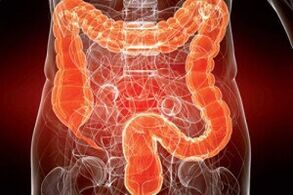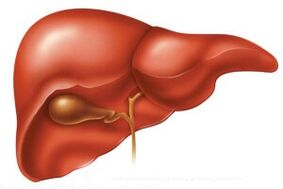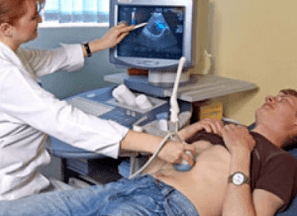Almost all of us have to deal with manifestations of helminthiasis. These parasites have coexisted with humans for so long that Hippocrates himself mentioned them in his writings. According to the World Health Organization, more than 5 billion people on earth are currently affected by various helminthic diseases.
The pharmaceutical industry regularly produces modern products aimed at neutralizing parasites in the human body, folk remedies for helminthiasis, complementing traditional remedies without losing their relevance.
About Worms

About 250 species of parasites live in human tissues and organs. They all fall into two categories:
- Flatworms (nematodes);
- Roundworms (tapeworms and flukes).
They vary in size from a few millimeters to 10-12 meters. Parasites sexually mature quickly, after which they acquire the ability to lay 100, 000 to 100, 000 eggs per day.
Even if their conditions are not the most favorable, these eggs can remain viable for a long time. Types of organisms affected by parasites, according to their developmental stage:
- the final host, where the parasite can develop to puberty;
- Intermediate host in which the worm reaches one of its developmental stages.
In the final host, the parasite can go through multiple complete developmental cycles and live in it for decades. For various types of parasites, a human can be either the ultimate host or an intermediate host, just as they can be mollusks, fish, and carnivores. According to the type of biological cycle, cases of parasitic infection are divided into:
- Biological helminthiasis - the development of worms occurs in various types of organisms;
- Soil worms - worm eggs spend part of their developmental cycle in soil without an intermediate host.
How do parasitic infections work?

The ways worms enter the human body are varied and depend on social characteristics, natural and climatic factors, and food preferences. The main route of parasitic infection:
- Through dirty hands, contaminated water, poorly processed food.
- When inhaling dust particles with eggs;
- through the skin;
- An intermediate host (Wuchereria bancrofti) after mosquito bites;
- When eating contaminated seafood, meat, fish (flukes).
The nutritional profile of some northern peoples suggests the use of light salt and raw fish for food. In this population, the prevalence of trichinosis and hydatid disease is high.
Which organs are affected by helminthiasis

Destruction of worms can be localized in many organs and tissues. The localization of a worm depends on its developmental stage, so the same type of worm can inhabit different parts of the gut at different stages of its existence. Organs affected by helminthiasis:
- Large intestine - roundworms, pinworms;
- Duodenum - Strongyloides stercoralis;
- lymphatic vessels,
- Pulmonary - Pulmonology;
- Subcutaneous tissue - larval migration.
- Worms inhabit the hollow organs and tissues of the human body.
Depending on the location of the parasite, helminthiasis is divided into several types:
- Tissues (echinococcosis, cysticercosis);
- Translucent (taeniasis, ascariasis, ascariasis).
Some worms in the larval stage alter body tissue to form capsules or granules around themselves (Trichinella, Toxoplasma). There is one species of worm that migrates in the larval stage and under the skin and in organ tissues of humans (larval worms).
Their temporary stay in the human body is in the form of internal organs and skin, and a person is an intermediate host for them.
Clinical manifestations of helminthiasis

Like many other infections, helminthiasis goes through two stages of development: acute and chronic. Their duration:
- Acute phase - from 2-3 weeks to several months;
- Chronic phase - from 2-3 months to several years.
Despite the variety of types of worms and their localization, the symptoms of the acute phase have common manifestations - these are allergic symptoms and toxic effects on the human body:
- slightly increased temperature;
- Muscle pain,
- rash,
- limb edema,
- swollen lymph nodes,
- indigestion,
- enlarged spleen and liver,
- Central nervous system damage.
Laboratory blood tests showed a change in its formulation - eosinophilia, and a marked increase in the number of white blood cells was diagnosed. The transition of helminthiasis to the chronic phase is characterized by symptoms that depend on the organ affected by the parasite, the developmental stage, number and species of the helminth. In the chronic phase of helminthiasis, the following symptoms are diagnosed:
- indigestion and intestinal pain,
- intestinal obstruction,
- hemorrhagic colitis,
- anemia,
- vitamin deficiency,
- drastic weight loss
- Obstructive jaundice, hepatitis (liver damage),
- loss of certain functions of the central nervous system (localization of parasites in the brain),
- Inflammatory disease of the pelvic organs (when pinworms enter the vagina),
- gastric and intestinal ulcers (chronic strongyloidiasis),
- Muscle tissue damage, cerebral capillary granuloma formation (severe trichinellosis),
- Damaged lymphatic system (when infected with nematodes).
With helminthiasis caused by Echinococcus, not only do liver cysts form, but the parasite damages bone tissue. This makes bones brittle and increases the risk of fractures. Destruction of the human body by Dirofilaria repens larvae occurs in the form of the formation of subcutaneous nodules containing the parasite. The node is able to move through the thickness of the skin and mucous membranes.
Analysis of the symptoms of helminthiasis confirms that the disease has no stable clinical manifestations and no clear specific signs.
Diagnosis of Parasitic Infections
If you don't make an accurate diagnosis in time, you may miss the time to start treatment when it might be most effective.
The transition from acute to chronic phase of helminthiasis often masks the true cause of the disease.

A parasitic infection can be mistaken for a symptom of a completely different disease.
It is very important not to self-medicate, but to seek medical help from an infectious disease specialist or parasitologist. In his arsenal there are enough modern methods for diagnosing parasitic infections:
- Laboratory tests of stool, bile, sputum, blood, urine, rectum, and rectum
- Nasal scraping of mucus, duodenal contents to detect parasites, their eggs and larvae;
- Ultrasound, radiography;
- Endoscopy, internal biopsy.
The most effective method is thought to be a serological test - a method that analyzes the serum for the presence of antigens that infect certain types of worms.
This research can show the presence of parasites even in the early stages of infection.
Treating Parasitic Infections with Folk Methods

Based on the diagnosis, the doctor prescribes deworming treatment, followed by the timing of a controlled study.
All advice from experts should be followed carefully to avoid complications.
There is no need to be reminded to observe preventive hygiene measures to prevent parasitic and secondary infections in family members.
Proponents of folk remedies need to remember that the use of these funds is an adjunct and not a substitute for medication.
Like medicines, traditional medicines have contraindications and side effects. That's why it's worth discussing this method with your doctor before using it. Home Remedies:
- Take peeled pumpkin seeds for 2 weeks to keep the thin green skin on the seeds.
- Take 3/4 tablespoon of peel decoction from one pomegranate. boiling water. The remedy is to drink on an empty stomach, which must be done within an hour and a half, dividing the broth into three doses. After a few hours, be sure to stimulate the bowel movement with a laxative.
- An enema should be administered with freshly squeezed carrot juice (40ml) daily for 7 days.
- Garlic and preparations containing it are often used.
- Introduce a whole clove of garlic into the rectum (to fight pinworms).
- Receive freshly prepared garlic juice (10-15 ml) and warm milk (1 cup), the mixture should be consumed on an empty stomach and should be repeated 1-2 times during the day.
- Infuse half a liter of vodka with a mixture of 50 grams of garlic and grated horseradish. The mixture was injected for 1. 5 weeks and filtered. Mandatory dose - 1 tablespoon. l. Before each meal, the infusion must be rinsed. Effective against giardiasis.
- Taking a garlic porridge enema before bed is effective against pinworms and tapeworms. Enema Solution: Add 1 tsp to a glass of water. chopped garlic. Regularly throughout the week.
- 2 cloves garlic soup, 2 tbsp. milk, 1 tbsp. l. Dried tansy flowers are administered as an enema. The enema mixture should boil for about 10 minutes. Perform 7 times, and repeat the course of treatment after ten days of rest to determine the therapeutic effect.
Herbs and Fees:
- Pour 1 teaspoon of dried wormwood into 400ml (2 tablespoons) of boiling water, filter and cool, take 1-2 tablespoons for infusion. l. Three times a day before each meal. Effective against ascariasis and ascariasis.
- Tansy (1 tablespoon of dried flowers) and 0. 5 liters of boiling water for 3 hours, then enter the rectum as an enema before bedtime. This medicine is contraindicated in pregnant women and children.
- Start the infusion with 4 tablespoons for half an hour. l. Filter unripe walnuts and a glass of salty boiled water and take with laxatives. Effective against taeniasis, ascariasis and enterobiasis.
- 1st. l. Pour the tansy flowers into 200 ml of boiling water, and filter the infusion after one hour. Admission frequency is standard - art. l. 20 minutes before meals. So you need to treat for 2-3 days, complete the infusion with laxatives.
- Boil 1 kg of sorrel and 1 liter of boiling water for 2 hours (preferably in a water bath), strain, must add a few tablespoons of sugar. The volume of the final product is 1 cup of broth, which must be taken 1-2 small sips per day before meals.
- Helminthiasis is a complex infection with a multicomponent clinical presentation. They can cause serious complications and cause irreversible damage to human health.
When infected with parasites, self-treatment is not acceptable. Folk recipes should be used with extreme caution and only as an adjunct to medical treatment.






































